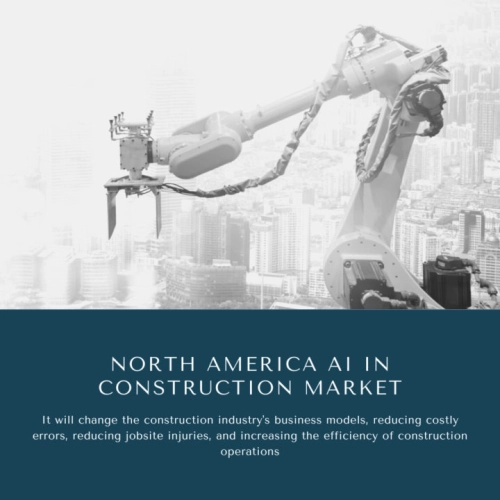
- Get in Touch with Us

Last Updated: Apr 25, 2025 | Study Period: 2022-2027
Artificial intelligence (AI) and machine learning (ML) are becoming increasingly popular in North America, and it's only a matter of time until they're implemented on building sites.

Despite projections of significant job losses, AI will not be able to completely replace the human workforce. Instead, it will change the construction industry's business models, reducing costly errors, reducing jobsite injuries, and increasing the efficiency of construction operations.
Construction executives should focus their investments on areas where AI may have the greatest influence on their company's specific demands. Early adopters will shape the industry's future and benefit in both the short and long term.
The North America AI in Construction Market accounted for $XX Billion in 2021 and is anticipated to reach $XX Billion by 2026, registering a CAGR of XX% from 2022 to 2027.
Zurich North America has implemented Chisel AI's Submission Intake and Policy Check solutions to automate core Construction underwriting and placement processes, ensure policy quality, and reduce the costs of policy rework and reissuance, according to Chisel AI, a technology provider for the global insurance industry.
The construction industry is now using Chisel AI Policy Review to check and validate policies against binders to discover any errors or omissions, save policy issuance costs, and maintain Zurich's gold standard for contract quality and certainty.
Urbint, the only AI-powered field risk mitigation platform for critical infrastructure operators, has announced the release of Urbint Lens for Worker Safety, a new predictive artificial intelligence (AI) technology that identifies safety threats to field workers, allowing supervisors to avoid serious injuries and fatalities.
Construction-related serious injuries and fatalities have not decreased. This is due to the fact that many hazards to worker safety, such as electric current and slip hazards, are either invisible or readily disregarded.
Urbint Lens for Worker Safety employs machine learning to identify hidden safety concerns ahead of time, allowing managers to assign and conduct targeted interventions before an event happens.
| Sl no | Topic |
| 1 | Market Segmentation |
| 2 | Scope of the report |
| 3 | Abbreviations |
| 4 | Research Methodology |
| 5 | Executive Summary |
| 6 | Introduction |
| 7 | Insights from Industry stakeholders |
| 8 | Cost breakdown of Product by sub-components and average profit margin |
| 9 | Disruptive innovation in the Industry |
| 10 | Technology trends in the Industry |
| 11 | Consumer trends in the industry |
| 12 | Recent Production Milestones |
| 13 | Component Manufacturing in US, EU and China |
| 14 | COVID-19 impact on overall market |
| 15 | COVID-19 impact on Production of components |
| 16 | COVID-19 impact on Point of sale |
| 17 | Market Segmentation, Dynamics and Forecast by Geography, 2022-2027 |
| 18 | Market Segmentation, Dynamics and Forecast by Product Type, 2022-2027 |
| 19 | Market Segmentation, Dynamics and Forecast by Application, 2022-2027 |
| 20 | Market Segmentation, Dynamics and Forecast by End use, 2022-2027 |
| 21 | Product installation rate by OEM, 2022 |
| 22 | Incline/Decline in Average B-2-B selling price in past 5 years |
| 23 | Competition from substitute products |
| 24 | Gross margin and average profitability of suppliers |
| 25 | New product development in past 12 months |
| 26 | M&A in past 12 months |
| 27 | Growth strategy of leading players |
| 28 | Market share of vendors, 2022 |
| 29 | Company Profiles |
| 30 | Unmet needs and opportunity for new suppliers |
| 31 | Conclusion |
| 32 | Appendix |